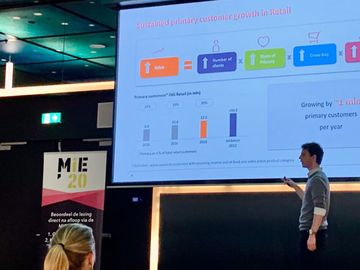
Public Sector: How benchmarking customer journeys improves service experience
Online customer journeys are no longer just a concern for the business sector. Increasingly, public institutions such as city councils, semi-governmental institutions, utilities and tax authorities are focusing on boosting the service experience on their desktop and smartphone sites, and in apps.
The benefits for these institutions are pretty clear: a better online service experience reduces call volumes and in-person visits to crowded service desks. By empowering citizens to self-service their own needs online, public institutions save money. At the same time, they boost public trust by adding value and satisfaction to the lives of the people they serve.
Lessons from the private sector
At WUA, we have been benchmarking service experiences in the private sector for years. We have performed over 1.050 studies, scanning service experiences on more than 26,000 websites in 20 countries in finance, insurance, energy and banking. Now, we’re applying our expertise to online service experiences in the public sector.
At first, this may seem counterintuitive. You might be thinking, what could private sector experiences teach service providers in the public sector? The truth is: by focusing more on the customer journey and user experience, public institutions can greatly improve the efficiency and cost-effectiveness of their online services. Today’s citizens are used to smooth online service experiences in their private-sector (e-commerce) transactions. They expect one-stop service, smooth lines of communication and easily navigable sites—for desktop and on smartphone.
Unlike in the private sector, public-sector sites don’t have to worry about getting an upper hand on their competitors. Yet they are concerned with saving costs and keeping their “customers” (taxpaying citizens) satisfied. And that means providing more effective online service.
The possibilities for public sector benchmarking
At WUA, we also apply our Digital Service Benchmark and model to the public sector. Using our Digital Service Benchmark and our inhouse developed online questionnaires, we ask respondents to perform one or more service tasks on a website. Then, we ask them key questions about their customer journey and service experience. We focus on three different aspects of the service experience (find more about our method here):
Functional: Technological functioning of the website, and the accessibility of information
Rational: The logic of a website (navigation, information, and facilitation)
Emotional: The appreciation for the provider and the feeling customers have during the process of solving a service question.

The results provide public institutions and digital service providers with powerful insights on how to improve all kinds of service tasks. It also delivers clear service KPIs like CES, NPS and channel preference.
An idea on how this works: Applying for a parking permit
To give you an idea of how this works, in a recent study, we focused on one important task: applying for a parking permit online. We asked hundreds of participants in the four largest cities in the Netherlands to rank their customer journey and experience. Like all of our benchmarking activities, the results of this study will produce recommendations for how to improve the customer service experience. It will help cities to learn from each other. The same approach applies to many different types of online service tasks. These benchmarks help public institutions make smarter web design choices based on real-life NPS and CES feedback from users.
The possibilities for public-sector service benchmarking are very broad. Virtually any online task can be studied and benchmarked using our method. Some examples include:
Booking service appointments
Requesting changes to personal information
Applying for documents (such as passports, ID cards, permits etc.)
Making complaints
Benchmarking services like these will help public institutions streamline their online services!
Benchmarking helps the public sector improve
Today’s public sector faces tight budgets, increasingly skeptical citizens and crowded service points. Benchmarking and improving online service not only lowers costs, it helps build stronger ties between citizens and their public officials. This trust is essential to the proper functioning of governmental organizations.


